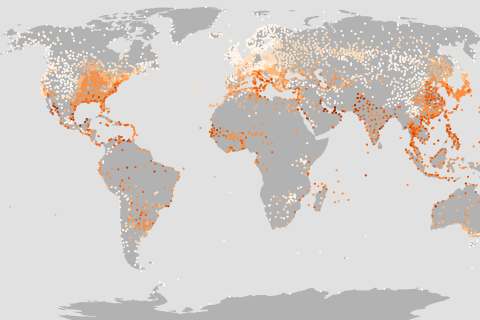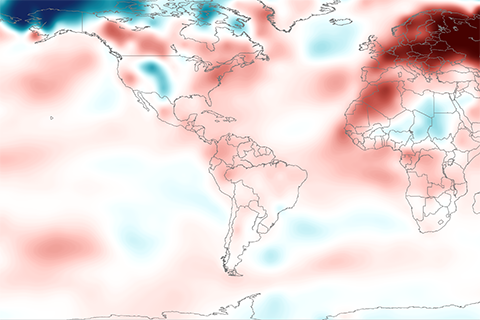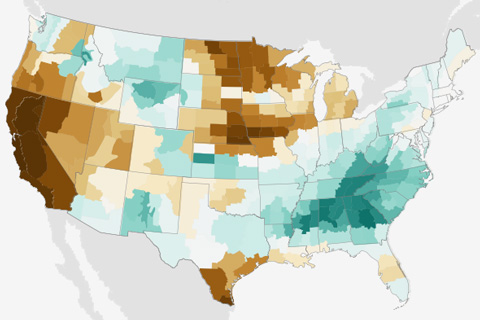
Like the months before it, April 2020 was also the second warmest on record for the globe, which means 2020 is almost certain to be among the four warmest years on record.

Like the months before it, April 2020 was also the second warmest on record for the globe, which means 2020 is almost certain to be among the four warmest years on record.

Climate models project dangerous combinations of heat and humidity by the end of the 21st century. New research says these extremes are already happening.

Global temperatures in March 2020 were the second warmest on record, helping to start spring off just as abnormally warm as winter ended.

Cool conditions in Alaska and northern Canada related to a strong polar vortex were not enough to outweigh the extreme warmth across Europe and Asia in February 2020. Both the Northern Hemisphere and the globe as a whole had their second-warmest February on record.

Much of the Southeast experienced extremely wet conditions last month, while almost all of California and parts of Oregon and Nevada were either much drier than average or record dry.

Climate.gov talks with scientific scuba diver and marine scientist Danielle Claar, an early career scientist with a passion for everything ocean—from tide pools to coral reefs.

January 3, 2020

Edited by NOAA scientists, the new report reveals scientists' advancing ability to quantify human imprint in climate.

On Tuesday, November 19, NOAA sea level rise expert William Sweet answered questions in a Climate.gov tweet chat about sea level rise and U.S. high-tide flooding.